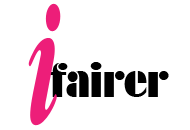1 of 1 parts
How Technology is Influencing Art and Design

In the digital age, technology has become an integral part of our daily lives, revolutionizing various industries and transforming the way we perceive and create art and design. From digital tools and software to virtual and augmented reality, technology is reshaping the landscape of artistic expression and design innovation. Here's a look at how technology is influencing art and design today.
1. Digital Tools and Software
Digital Painting and Illustration: Artists now have access to a plethora of digital tools that allow them to create stunning works of art on tablets and computers. Software like Adobe Photoshop, Corel Painter, and Procreate offer a wide range of brushes, textures, and effects that mimic traditional media, providing artists with endless possibilities to experiment and create without the limitations of physical materials.
3D Modeling and Animation: In the realm of design, 3D modeling software such as Blender, Maya, and ZBrush enable designers to create intricate and realistic models for use in various fields, including gaming, film, and product design. Animation software like After Effects and Toon Boom Harmony allows artists to bring their creations to life with dynamic movement and storytelling.
2. Virtual and Augmented Reality
Immersive Art Experiences: Virtual Reality (VR) has opened up new avenues for artists to create immersive experiences that transport viewers into entirely different worlds. Platforms like Tilt Brush by Google allow artists to paint in a 3D space, creating interactive installations that viewers can explore in VR.
Augmented Reality (AR) in Design: AR technology is being utilized in design to enhance the way we interact with the physical world. For instance, interior designers use AR apps to visualize how furniture and decor will look in a real space before making a purchase. This technology is also being used in advertising and marketing to create engaging and interactive campaigns.
3. AI and Machine Learning
AI-Generated Art: Artificial Intelligence is making waves in the art world with algorithms that can create original pieces of art. AI models like DeepArt and Runway ML use neural networks to analyze and replicate artistic styles, producing works that often blur the lines between human and machine creation.
Design Automation: In design, AI is being used to streamline processes and enhance creativity. Tools like Adobe Sensei use machine learning to automate repetitive tasks, suggest design elements, and even generate entire layouts based on user input. This allows designers to focus more on the creative aspects of their work.
The intersection of technology and art is a fertile ground for innovation and creativity. As digital tools and technologies continue to evolve, they provide artists and designers with new ways to express themselves and push the boundaries of what is possible. Whether it's through digital painting, immersive VR experiences, AI-generated art, or collaborative online platforms, technology is reshaping the world of art and design, making it more accessible, dynamic, and interconnected than ever before.
Latest Gossips
Mixed Bag
 From Lehenga to Loungewear: The Versatility of Indian Textiles in Everyday Fashion
From Lehenga to Loungewear: The Versatility of Indian Textiles in Everyday Fashion
Indian textiles are celebrated worldwide for their intricate craftsmanship, rich history, and adaptability...... Ford Mustang vs. Chevrolet Camaro: A Legendary Rivalry
Ford Mustang vs. Chevrolet Camaro: A Legendary Rivalry
The battle between the Ford Mustang and Chevrolet Camaro is one of the most iconic rivalries in the ...... Shampoo vs. Conditioner: Are You Using Them Correctly!
Shampoo vs. Conditioner: Are You Using Them Correctly!
Shampoo and conditioner are essential hair care products, but many people use them incorrectly or ...... Baingan Bharta: Smoked Eggplant Delight
Baingan Bharta: Smoked Eggplant Delight
Baingan Bharta is a beloved North Indian dish that celebrates the rich, smoky flavors of roasted eggplant......
Most Popular
Dare To Share
 Bully Is Back
Bully Is Back
The boy who sexually harassed me..
Read More... Man hitting
Man hitting
I am a house girl in one of the posh estates in Mombasa. I know......
Read More... Past Relation
Past Relation
I have a son and my fiance has no clue. What do i do? I am 31 and....
Read More...
check outclick money scam review. Recently, new review of click money is posted on clickmoneyscam.com

